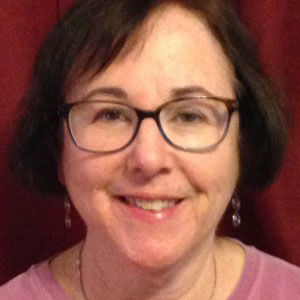Fun activities help kids ‘wake up’ in the morning
Published November 21, 2019
Joyce Cohen Olshan knows it isn’t easy to get up for school in the morning. She encourages children to slither like a snake to the kitchen, make themselves part of a “pillow sandwich” or walk on bubble wrap.
“Instead of everybody tearing their hair out, I said, we need to give tools to these young parents just to stop and look at the child and try these simple little games,” said the 64-year-old occupational therapist. “Without having to mention anything medical, developmental or diagnostic, hey, let’s have fun and roll around in bed a little bit or let’s have fun and jump to the bathroom like a kangaroo. Let’s splash in the water. All of those things are sensory stimulating activities that get the brain and the body to come together and can help the child wake up.”
That’s the topic of Olshan’s “My Wake Up Book,” published in 2016, an illustrated book for young readers giving a variety of techniques to help bring children to life in the morning. Her ideas are based off of certain tenets of occupational therapy, a field in which she obtained a degree from Mizzou.
The native St. Louisan also has a degree in Judaic studies from the University of Missouri-Kansas City and lived in Israel for a time. Born at Jewish Hospital, the Ladue High School graduate once worked at Solomon Schechter Day School, a forerunner of Saul Mirowitz Jewish Community School, as part of their Hebrew program.
“At that point, I sort of switched my occupational therapy direction from adult to pediatric,” she recalled. “The same kids I was taking out to tutor in Hebrew were the same kids who needed tutoring in English and other things.”
Due to her OT background, she began thinking that there might be issues that could be addressed with how some children process stimuli.
“With the help of another Israeli teacher, I helped her to begin a sensory program,” she said. “Today, it is very well understood but back in the 1990s or so, schools and teachers were just beginning to realize that with some of their children with behavior [issues], it wasn’t just behavior. It was the fact that these were children who were not comfortable in their skin and they needed a little more intervention to help them learn.”
Within the Jewish community, Olshan is a longtime religious school teacher and b’nai mitzvah tutor. She was once a family program coordinator at Shaare Zedek and worked at the Central Agency for Jewish Education. She often tries to implement occupational therapy concepts in Judaic settings whether it is introducing seat cushions for older congregants during services or creating large-print greeting postcards for seniors during the holidays.
Olshan is a reading volunteer for the local Ready Reader program to help introduce children to books.
My Wake Up Book is available on Amazon. Illustrations in the book are by B’nai Amoona congregant Jonathan Herzog.
What is occupational therapy?
Our aim is always to look at the whole person and see if we can help them to habilitate or rehabilitate so that they can function with their occupation. Their occupation could be as obvious as their job or their role in the home or, for a child, their play and their school. We look at the physical aspects, the mental, the sensory. We put it all together and we work with physical therapists, speech therapists, the doctors. It could mean using adaptive equipment. It could mean helping kids at school to find the right environment. It could be in a nursing home at the end of life, how to make that a quality time. It could be even as early as neonatal with young babies. We really cover the whole spectrum of life.
Your book is geared toward helping children who may process sensory information differently.
The occupational therapy profession was really ahead of the game. Occupational therapists became the leaders in this area of study. It goes all the way up to adults. There are adults who would say, ‘Oh, maybe that’s why as a kid I had a hard time with loud noises and labels in my shirt and foods I didn’t like.’…It is something that almost anybody can relate to because we all have things that give us the heebie-jeebies. Most of us don’t like to hear nails on a chalkboard or we don’t like certain sounds or smells. But adults have learned ways to accommodate for those sensory things and they are able to control their environment. When you are talking about young children, number one, they don’t realize what it is that has got them off-kilter. Parents don’t understand it right away. And they don’t have to ability to adapt their environment for themselves. They are at the mercy of the adult world.
Kids today stare at screens a lot and take in sensory input that way. How does that affect them?
We didn’t sit around like kids do today. The next generation came along and they were blessed with beautiful, fun, colorful things that kept their attention span going constantly. We have a couple of generations that lost this natural ability to just move and grow and have fun without having a gadget to tell you how to do it. They even asked me to put this book into an iPad and make it digital. I said, ‘No, I want it to be a book that’s tangible, that sits in a child’s hands, that they have to turn the page, that they have to feel it.’ The parent sits there with them. I was looking to go back to those togetherness kind of interactions.















